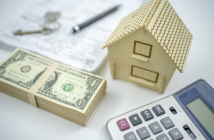“What To Know Before You Buy.”
Buying a home in an area of natural beauty can be idyllic. But also risky. Locations at higher risk of natural disaster can make insurance difficult and costly to obtain. And increasingly so, because natural disasters are increasingly common and severe. Tornadoes, hurricanes, wildfires, and floods are all expected to rise in frequency, intensity, and duration in the coming years. Those impacted and without loss of use coverage or inadequate coverage may find themselves seeking temporary housing from local disaster relief charities or the Federal Emergency Management Agency (FEMA).
Here’s some more food for thought before you buy your dream home, with a little insight from the Washington Post, Forbes and Freddie Mac among others.
Although natural disasters are hard to predict, certain areas are more likely to experience specific disasters than others. Before you buy a home, make sure you are aware of the potential disaster risks in your location.
There are many online resources for you to reference when determining whether a property is at higher risk of certain types of natural disasters, such as flooding, fires, earthquakes, or hurricanes.
- Disaster history: The Federal Alliance for Safe Homes’ flash.org allows you to learn about an area’s disaster history based on ZIP code. Although you may be aware of certain threats, such as hurricanes, your preferred ZIP code may be in an earthquake or other disaster zone.
- Climate risk: Get a free high level risk assessment through ClimateCheck by entering the zip code of the property.
- Flood maps: The Federal Emergency Management Agency maintains flood maps that show how likely it is for an area to flood.
- Flood maps (by neighborhood): Realtor.com lets you check for flood zones by neighborhood.
- Fire risk: The U.S. Department of Agriculture and U.S. Forest Service’s Wildfire Risk to Communities tool lets you assesses the risk of fire.
- Earthquake risk: The U.S. Geological Survey has a tool that locates any faults or folds in the area to help you assess the risk of earthquake damage.
If the house is in an area at higher risk of natural disasters, what should I do? There are several steps you should take before agreeing to purchase a home.
First, take stock of the house itself:
- How old is the home? Newer homes may be more up-to-date on recent building codes and regulations designed to help ensure homes are built to reduce damage from natural disasters.
- Are there already safety upgrades in place? For instance, homes in flood zones may have storm panels, shutters or flood vents. Homes in earthquake-prone areas may have a sill plate foundation. Homes in regions prone to wildfires may be built with fireproof materials. If needed, consider retrofitting or augmenting your home with these.
It is recommended you work with your insurance agent or broker to see what policy endorsements may be needed to insure your home against all risks associated with disasters.
What insurance will I need?
Your lender will require you to have homeowners insurance before you buy a house. In areas at higher risk of natural disasters, additional coverages are highly recommended.
Homeowners insurance typically covers your house structure, your belongings and additional living expenses. In addition, most homeowners’ policies cover damage caused by fire, but you’ll likely need additional protection against earthquakes and floods. Unfortunately, your own house isn’t the only thing you need to worry about. Damage to other houses, depending on severity and extent, can make your locale less desirable to potential home buyers, and depress the value of home in the neighborhood.
Did you know? FEMA estimates that one inch of floodwater can cause up to $25,000 in damage, and earthquakes can potentially cause extensive damage to a home’s foundation.
Your insurer may offer add-on coverage for an additional cost. FEMA offers flood insurance through the National Flood Insurance Program, and residents of California can purchase earthquake insurance through the California Earthquake Authority.
Buying a home in an area prone to natural disasters carries risk that you may choose to accept. But you need to make sure that your home has the proper safety features, and be prepared for the possibility that insurance coverage may be difficult to find and expensive.
KEY TAKEAWAYS
- Natural disasters are becoming more common, more severe, and causing more economic damage. Don’t underestimate costs of insurance when looking at the long-term costs of home ownership.
- After a natural disaster, housing for survivors may be harder to find and more expensive in nearby locations. Ensure you have adequate insurance for temporary housing included in your policy.
- Following a natural disaster, homeownership rates decrease in an affected area and new homeowners are less likely to move in to a recently affected area. This can impact home values.
- Before buying, inventory existing safety measures and consider in the cost of purchase the expense of adding to these if needed. (Learn more about safety measures in “Part 2” of this two-part series.)
And last but not least, when looking to finance your new home purchase and improvements, your Credit Union is a great resource. We offer exceptionally competitive home equity loans, and offer a wide variety of mortgages through our own home loan company for better service and great rates.
We hope you found this information valuable. Before you start house hunting, read part 2 in this series for more things to consider when looking for a home in an at-risk area.





